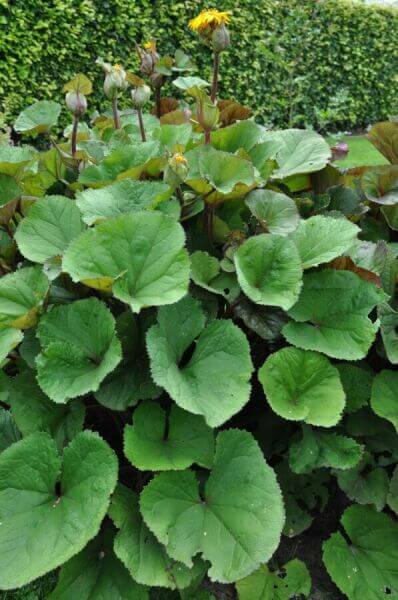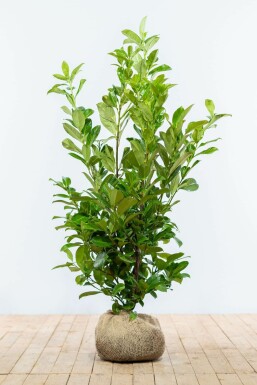Hedge Plants For Commercial Properties
Hedge Plants For Commercial Properties
Blog Article
Best Hedging Plants For Garden Layout
Boost your garden's appeal with lush hedge varieties such as Yew (Taxus), Thuja, Laurel, Photinia, and Bamboo, commemorated for their structural stability and environmental benefits.
Yew and Thuja supply evergreen protection and winter season durability, while Laurel offers quick development and broad, fragrant leaves.
Photinia adds seasonal beauty with its dynamic red foliage, and Bamboo lends a low-maintenance, serene atmosphere.
These hedges improve air quality, reduce sound, and produce tranquil, private spaces.
Appropriate planting, spacing, and maintenance make sure vigorous development and environmental harmony.
Check out how these lush varieties can raise your garden's charm and well-being.
Secret Takeaways
Transform Your Garden With Lush Hedge Varieties
- Select Yew for its thick, evergreen growth and unparalleled longevity.
- Go with Laurel for its quick development and broad leaves, ensuring fast personal privacy.
- Choose Photinia for its dynamic seasonal foliage, which turns a striking dark red.
- Make use of Bamboo for a low-maintenance, winter-hardy hedge with aesthetic appeal.
- Area plants 2-3 per meter and prune routinely for optimum growth and health.
Popular Hedge Plants
When changing a garden with lush hedge varieties, it's necessary to consider popular hedge plants such as Yew, Thuja, Laurel, and Photinia due to their unique characteristics and advantages.
Yew (Taxus) is extremely esteemed for its longevity and dense, green development, making it a prime option for withstanding landscapes.
Thuja is kept in mind for its evergreen foliage and robust winter durability.
Photinia includes seasonal vibrancy with red leaves that darken with time, creating dynamic visual appeal.
Laurel provides quick development and aromatic, broad leaves, ideal for fast personal privacy.
Additionally, Bamboo is an outstanding option for atmosphere, using a low-maintenance, winter-hardy option that enhances the garden's aesthetic with its classy, swaying walking canes.
These choices cater to a variety of horticultural requirements and choices.
Advantages of Garden Hedges
Garden hedges use a wide range of advantages, making them an important addition to any landscape. These natural barriers are cost-efficient to carry out and provide considerable wind protection, enhancing air circulation and contributing to sound decrease. The thick foliage of hedges like Thuja and Beech ensures privacy by obstructing presence, producing a peaceful and secluded environment.
Hedges also play an essential role in microclimate regulation, supplying a steady environment that promotes plant development and minimizes temperature level variations. Their detailed leaf structures filter toxins, enhancing air quality and contributing to a healthier garden environment.
Additionally, hedges master sound decrease, absorbing and deflecting acoustic waves to lower ambient noise levels. This dual performance of supplying both visual and acoustic personal privacy enhances the general harmony and aesthetic appeal of any garden.
Planting and Maintenance Tips
For an effective hedge, careful preparation of the planting area is essential. Guarantee the soil has correct pH and drainage to support strong root advancement.
Area the plants properly for the chosen types. Water the hedge often during its initial development stage, changing as required with seasonal changes.
Execute a systematic insect control and illness prevention strategy, utilizing natural or chemical treatments when required. Routinely check for aphids, mites, and fungal infections.
Apply mulch to keep wetness and reduce weeds. Seasonal pruning promotes thick development and air circulation, important for plant health.
Following these standards will assist you cultivate a lively, well-maintained hedge that enhances the charm of your garden.
Spacing and Trimming Standards
Spacing and Cutting Standards
Correct spacing and cutting are vital for cultivating healthy, aesthetically appealing hedges. Adequate spacing ensures each plant receives sufficient nutrients, light, and airflow.
Follow these guidelines for optimal hedge maintenance:
- Spacing: Position hedge plants 2-3 plants per meter to encourage robust growth.
- Pruning Strategies: Routine pruning is necessary for keeping wanted hedge height and shape. Cut brand-new growth in summertime and cut back older wood during winter.
- Seasonal Care: Adjust cutting approaches and schedules according to seasonal requirements to guarantee plant health.
- Hedge Height: Regularly screen and cut to preserve the desired hedge height and achieve consistent aesthetics.
Sticking to these steps will guarantee your hedge prospers, improving both the appeal and performance of your garden.
Selecting the Right Hedge
Choosing the Right Hedge
Selecting the proper hedge involves evaluating aspects such as fully grown height, foliage density, and environmental strength. Effective hedge plant selection requires comprehending each types' growth characteristics and site-specific flexibility.
For example, Yew (Taxus) uses outstanding durability and thick growth, while Thuja is noteworthy for its winter strength. Furthermore, thinking about maintenance requirements is crucial; fast-growing types like Laurel or Privet demand routine trimming, whereas low-maintenance choices like Bamboo or Ivy may be preferable for those looking for minimal maintenance.
Environmental aspects such as soil type, light accessibility, and wetness conditions must also assist the selection procedure. This mindful method makes sure the chosen hedges will prosper, providing both visual and practical advantages to the garden landscape.
Delivery and Planting Suggestions
To ensure your hedge plants thrive, they must be provided by specialized couriers and planted immediately upon arrival.
Follow these essential steps for successful planting:
- Soil Preparation: Improve the soil with natural matter to improve drainage and nutrient material.
- Planting Depth: Produce a trench two times the width and equal to the depth of the root ball.
- Watering Methods: Water completely after planting, keeping the soil regularly wet but not saturated.
- Mulching: Apply a layer of mulch to keep wetness and reduce weeds.
Consumer Support and Service
Provided the important function of prompt help in horticultural pursuits, our customer support team is available six days a week through telephone, email, and social media to provide professional suggestions and promptly address any concerns. Their dedication to quick response times guarantees client fulfillment by resolving inquiries related to plant health, optimal planting techniques, and upkeep schedules.

Accessibility
Within 24 hours
This comprehensive support group, strengthened by an excellent 9.3/ 10 consumer rating, highlights our dedication to boosting the gardening experience for every single client.
Frequently Asked Questions
For How Long Does It Take for Hedge Plants to Establish?
Hedge plants typically require one to three years to become completely established, with the precise duration varying by species and growing conditions.
Effective care during this critical period is important for robust development. Consistent watering, watchful weed control, and proper fertilizer application are pivotal in promoting strong root development.
For example, fast-growing species like Laurel might develop faster, while slower-growing ranges such as Yew might take longer. Persistent maintenance accelerates the establishment process, leading to healthy and thick hedges.
What Are the Finest Hedge Plants for Privacy?
The question of the best hedge plants for personal privacy includes assessing evergreen and deciduous choices.
Evergreen hedges like Thuja, Laurel, and Cypress provide year-round protection, making sure continuous privacy.
On the other hand, deciduous hedges such as Beech provide seasonal privacy, shedding leaves in colder months.
Secret maintenance tips for personal privacy hedges consist of regular cutting, fertilizing in spring, and appropriate spacing-- generally 2 to 3 plants per meter.
In addition, constant watering and diligent weed elimination are essential for promoting healthy, dense development.
Can Hedge Plants Attract Wildlife to My Garden?
Yes, hedge plants can bring in wildlife to your garden by offering essential advantages like shelter, food, and nesting sites, thereby improving local biodiversity. Yew, holly, and laurel are outstanding for bring in birds, while ivy supports a variety of pests.
However, it is necessary to note that there are some downsides, such as increased maintenance to handle bugs and regular maintenance. Carefully picking and maintaining hedge ranges can help balance these disadvantages and advantages, ultimately promoting a lively and sustainable environment in your garden.
Exist Any Flowering Hedge Plants Available?
Yes, there are flowering hedge plants offered that can boost the beauty of your garden.
For example, Elaeagnus, likewise understood as Olive Willow, produces fragrant white flowers in the fall, adding a touch of sophistication.
Photinia, another popular choice, showcases dynamic red leaves that grow into a rich green, producing a vibrant visual result throughout the seasons.
To ensure these plants flourish, it's vital to practice proper pruning techniques and seasonal maintenance, such as trimming new growth in the summertime and cutting back in the winter season.
These procedures will assist keep the health and visual appeal of your blooming hedges.
How Do I Avoid Bugs in My Hedge Plants?
To avoid bugs in hedge plants, use natural bug control methods and maintain proper hedge care. Introduce advantageous insects like ladybugs, which take advantage of hazardous insects, to produce a balanced ecosystem.
Regularly inspect your hedges for signs of infestation and quickly remove any affected parts to avoid the spread. Guarantee the health of your hedges by applying balanced fertilizers and providing adequate water.
Utilize mulching to maintain soil wetness and appropriate spacing to minimize plant stress and promote robust growth. These practices jointly assist in lessening insect issues and maintaining a healthy hedge.
Conclusion
In essence, picking the ideal hedge varieties such as Yew, Thuja, and Laurel can transform any garden into a relaxing haven. These plants provide year-round Additional info plant, improve aesthetic appeal, and deal useful advantages like noise reduction and wind protection.
Correct planting methods, accurate spacing, constant watering, and seasonal cutting are important for optimal development.
Trustworthy delivery services and skilled consumer assistance guarantee a seamless experience from purchase to planting, making it easier than ever to elevate your outside space.
Garden hedges offer a plethora of benefits, making them an important addition to any landscape. These natural barriers are economical to implement and supply significant wind defense, enhancing air blood circulation and contributing to noise decrease. The dense foliage of hedges like Thuja and Beech makes sure privacy by blocking presence, producing a tranquil and secluded environment.

Pruning Techniques: Routine pruning is vital for maintaining desired hedge height and shape. Trim brand-new development in summertime and cut back older wood during winter season.
Report this page